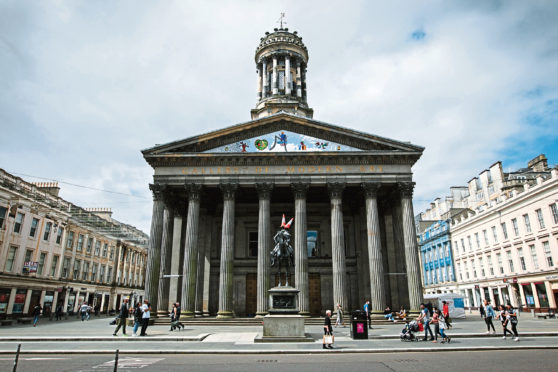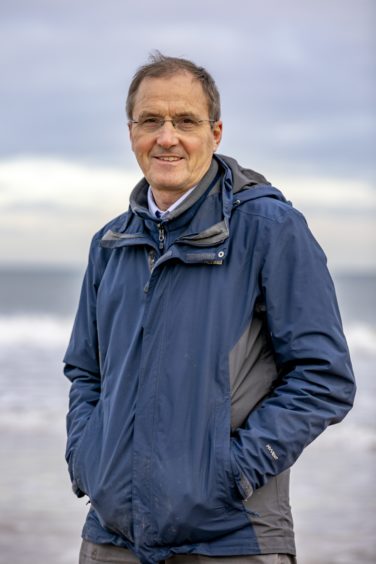
A government adviser warned local outbreaks must be tracked and halted or Britain could endure a second wave of Covid-19 within months.
Sir Ian Boyd, a member of the UK advisory group for emergencies, also warned that Scotland cannot stop the virus coming into the country but can prevent it spreading by bolstering test-and-trace operations.
He said the current operation to trace contacts of newly-confirmed Covid patients was “not working well” at the moment but said he expected it to become more effective in the weeks ahead.
His warning came as Scotland recorded its highest daily positive coronavirus tests for almost a month. Figures released by the Scottish Government yesterday showed 21 new cases but no deaths over a 24-hour period.
Sir Ian, speaking as Scotland enjoyed its first weekend since the reopening of pubs, restaurants and indoor shopping malls, said Britain was at a “pretty advanced” stage of containing coronavirus. He said: “We’ve got it on the back foot but we need to keep it there.”
“Winter flu and colds will interact with Covid-19 and make it more difficult to detect it, and we may get co-infections. Come September or October, when that starts to become more of an issue, we will be more challenged by the Covid-19 problem.”
Sir Ian, professor in biology at the University of St Andrews, is a member of the Scientific Advisory Group for Emergencies (Sage), the group of scientists that has been advising UK Government ministers on coronavirus.
He was chief scientific adviser at the Department for Environment, Food and Rural Affairs from 2012 until 2019.
He said: “I think some of the relaxation of social distancing is very sensible, but we have to be very, very vigilant. It is very likely that a second wave would be caused by local outbreaks and the earlier we can identify and react to those local outbreaks the better. We need to detect the local outbreaks and shut them down as quickly as possible, otherwise we will get a national outbreak. It’s about contact tracing, it’s about people being open about when they’ve got symptoms and getting tested.
“Everyone has to play their part in it, and if they don’t then we could see localised outbreaks becoming much bigger and much more difficult to control.”
The 21 cases announced yesterday is the highest number since June 21, when there were 26 positive test results. However, the national clinical director Jason Leitch said they were not clustered and he would expected day-to-day variation.
Sir Ian said: “We could have periods of time in Scotland when we have no new cases of coronavirus, but the problem is the number of cases around the world is still increasing.
“If Scotland is going to have contacts with the rest of the world, we will have coronavirus imported. There’s just no way you can stop it coming in.
“The question is: can we detect it very quickly once it has come in? And I think we should be able to do that.
“But it will require extreme vigilance on the part of every individual and the healthcare system. Getting rid of it completely is just not going to happen until we get a really effective vaccine that can be rolled out globally.”
Experts believe large-scale testing and tracing is likely to prevent a second wave of Covid.
Sir Iain said: “I don’t think it’s working well at the moment. It is a matter of trying to get a quite a complicated system of detection and response up and running. It’s going to take time, but we’ll get there.
“We’re pretty effective at these sorts of things where we put our mind to them and put the resources in. I’m pretty sure we’ll get there because it’s going to be a very important part of that vigilance needed to keep us as safe as possible.”
Deputy First Minister John Swinney warned the public of the ongoing threat of coronavirus, with the surge in positive cases coming after lockdown measures were eased on Wednesday last week. He tweeted the 21 positive cases “remind us of the danger still out there”.
Scotland’s coronavirus death toll remains unchanged from Thursday at 2,491. A total of 18,422 people have currently tested positive for the virus in Scotland. There are 305 people in hospital with confirmed Covid-19, a decrease of 11 from Friday.
The UK yesterday recorded 40 new deaths and 827 new infections through Covid-19 testing.
Transport Secretary Grant Shapps yesterday became the first senior politician to break ranks and declare he is taking a summer holiday abroad this year.
He said he and his wife Belinda had decided to take advantage of the relaxation of Foreign Office guidance on non-essential overseas travel.
Senior politicians had previously been queuing up to indicate they would be staying in the UK after the coronavirus pandemic threw international travel plans into disarray.
And last week Prime Minister Boris Johnson, who spent New Year in the Caribbean with his fiancee Carrie Symonds, said he had opted for a “staycation”.

Enjoy the convenience of having The Sunday Post delivered as a digital ePaper straight to your smartphone, tablet or computer.
Subscribe for only £5.49 a month and enjoy all the benefits of the printed paper as a digital replica.
Subscribe © Craig Smith
© Craig Smith